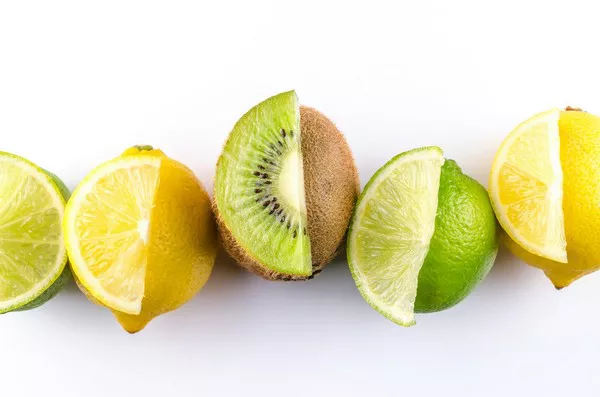Tomatoes, with their vibrant colors and juicy appeal, are not only a culinary delight but also a nutritional powerhouse. Packed with essential vitamins and nutrients, they contribute to a well-rounded diet and support overall health. In this comprehensive article, we delve into the world of vitamins present in tomatoes, exploring their benefits, functions, and the role they play in promoting your well-being.
Tomatoes: A Brief Overview
Tomatoes are a member of the nightshade family and are widely recognized as a fruit, though they are commonly used as a vegetable in culinary contexts. They come in various shapes, sizes, and colors, ranging from the classic red to yellow, orange, and even purple. Tomatoes are a staple ingredient in numerous cuisines around the world, revered for their versatility and distinct flavor.
1. Vitamin C: A Potent Antioxidant
Vitamin C, also known as ascorbic acid, is a water-soluble vitamin present in abundance in tomatoes. It serves as a powerful antioxidant, protecting cells from damage caused by free radicals – unstable molecules that can lead to oxidative stress and contribute to various chronic diseases. Vitamin C also supports the immune system, aids in collagen formation for healthy skin, and enhances the absorption of non-heme iron from plant-based foods.
SEE ALSO: Antioxidant Vitamins: Importance & Benefits
2. Vitamin A: Nurturing Vision and Beyond
Tomatoes are a source of provitamin A carotenoids, including beta-carotene, which the body converts into active vitamin A. Vitamin A is essential for maintaining healthy vision, as it plays a vital role in the functioning of the retina. It also supports immune function, skin health, and cell differentiation.
SEE ALSO: 5 Vitamins that Bolster Your Immune System
3. Vitamin K: Coagulation and Bone Health
Vitamin K is vital for blood clotting, and it also contributes to bone health by assisting in the synthesis of proteins that regulate calcium levels. Tomatoes contain a small amount of vitamin K, adding to the array of nutrients they offer.
SEE ALSO: 10 Foods Contain Vitamin K for Your Bodily Functions
4. Folate (Vitamin B9): Cellular Growth and Development
Folate, also known as vitamin B9, is crucial for cellular growth and division. It is particularly important during periods of rapid growth, such as pregnancy and infancy. Folate supports the formation of DNA and RNA, making it essential for healthy cell function.
SEE ALSO: Which Prenatal Vitamins Are Best: A Comprehensive Guide
5. Vitamin E: Protecting Cell Membranes
Vitamin E, a fat-soluble antioxidant, is known for its role in protecting cell membranes from oxidative damage. While tomatoes do not contain high levels of vitamin E compared to some other foods, they contribute to your overall vitamin E intake.
6. B Vitamins: Nourishing Energy Metabolism
Tomatoes contain several B vitamins, including thiamine (B1), riboflavin (B2), niacin (B3), and vitamin B6. These vitamins play essential roles in energy metabolism, supporting the conversion of carbohydrates, fats, and proteins into energy that the body can utilize.
SEE ALSO: Foods Highest in B Vitamins: An Essential Guide to Boost Your Health
7. Lycopene: The Star Carotenoid
While not a vitamin, lycopene is a carotenoid that deserves special attention due to its unique health benefits. Lycopene is responsible for the vibrant red color of tomatoes and is a potent antioxidant associated with numerous health benefits. Research suggests that lycopene may have a protective effect against certain types of cancers, particularly prostate cancer. It also supports heart health by reducing the risk of cardiovascular diseases.
Maximizing Nutrient Absorption of Vitamins in Tomatoes
Tomatoes exhibit an interesting phenomenon when it comes to nutrient absorption: their nutritional content can be enhanced through cooking and preparation. It’s essential to strike a balance to retain their overall nutritional value. Here are some tips to consider:
1. Use Variety: Include both raw and cooked tomatoes in your diet to enjoy a diverse range of nutrients. While cooking boosts lycopene availability, consuming raw tomatoes ensures you benefit from nutrients that are sensitive to heat.
2. Heat Gently: When cooking tomatoes, opt for gentle cooking methods, such as simmering or roasting at moderate temperatures. Excessive heat can still lead to nutrient loss, especially for heat-sensitive vitamins like vitamin C.
3. Choose Healthy Cooking Fats: Cooking tomatoes with healthy fats, like olive oil, can further enhance nutrient absorption. Lycopene is a fat-soluble compound, meaning it’s better absorbed when consumed with dietary fats.
4. Combine with Other Nutrient Sources: Pair tomatoes with other nutrient-rich foods to create balanced and nourishing meals. For example, adding cooked tomatoes to salads with leafy greens can enhance the absorption of fat-soluble vitamins from the greens.
5. Embrace Variety: Diversify your tomato consumption by enjoying a mix of fresh, cooked, and processed tomato products. Fresh tomatoes offer their own unique nutritional benefits, while cooked and processed forms provide concentrated nutrients like lycopene.
Example Recipes with Tomatoes for Both Flavor and Health Benefits
Here are three delicious and nutritious tomato-based recipes that showcase the versatility and health benefits of tomatoes:
1. Caprese Salad with Balsamic Glaze
Ingredients:
- 2 large tomatoes, sliced
- 1 ball of fresh mozzarella cheese, sliced
- Fresh basil leaves
- Balsamic glaze
- Extra virgin olive oil
- Salt and pepper to taste
Instructions:
- Arrange alternating slices of tomatoes and mozzarella cheese on a serving plate.
- Tuck fresh basil leaves between the tomato and cheese slices.
- Drizzle extra virgin olive oil over the salad.
- Season with a sprinkle of salt and pepper.
- Finish by drizzling balsamic glaze over the top for a sweet and tangy flavor.
- Serve as an appetizer or side dish.
2. Roasted Tomato and Garlic Soup
Ingredients:
- 6-8 ripe tomatoes, halved
- 1 head of garlic, cloves separated and peeled
- 1 onion, chopped
- 2-3 cups vegetable broth
- Fresh basil leaves
- Olive oil
- Salt and pepper to taste
Instructions:
- Preheat the oven to 400°F (200°C).
- Place the tomato halves and garlic cloves on a baking sheet.
- Drizzle with olive oil, sprinkle with salt and pepper, and roast for about 30-35 minutes until tomatoes are tender and slightly caramelized.
- In a pot, sauté the chopped onion in olive oil until translucent.
- Add the roasted tomatoes, garlic, and vegetable broth. Simmer for about 15-20 minutes.
- Use an immersion blender to puree the soup until smooth.
- Season with salt and pepper to taste.
- Garnish with fresh basil leaves before serving.
3. Tomato and Spinach Stuffed Chicken Breast
Ingredients:
- 2 boneless, skinless chicken breasts
- 2 large tomatoes, diced
- 1 cup baby spinach leaves
- 1/2 cup mozzarella cheese, shredded
- 2 cloves garlic, minced
- Olive oil
- Salt and pepper to taste
Instructions:
- Preheat the oven to 375°F (190°C).
- Butterfly the chicken breasts by slicing horizontally almost through the center, then open like a book.
- Season the inside of the chicken breasts with salt and pepper.
- In a skillet, sauté the minced garlic in olive oil until fragrant.
- Add the diced tomatoes and cook for a few minutes until softened.
- Add the baby spinach and cook until wilted.
- Remove the skillet from heat and stir in the shredded mozzarella cheese.
- Spoon the tomato and spinach mixture onto one half of each chicken breast, then fold the other half over to enclose the filling.
- Secure the chicken breasts with toothpicks if needed.
- Heat a skillet over medium-high heat with olive oil. Sear the chicken for 2-3 minutes on each side until golden.
- Transfer the chicken to a baking dish and bake in the preheated oven for about 15-20 minutes until the chicken is cooked through and the cheese is melted.
- Remove toothpicks before serving.
Conclusion
Tomatoes aren’t just a delightful addition to your meals; they’re a nutritional treasure trove brimming with essential vitamins and nutrients. From vitamin C’s antioxidant prowess to lycopene’s potential health benefits, each component contributes to your overall well-being. Incorporating tomatoes into your diet can be a delicious and effective way to enhance your intake of these vital nutrients. Whether you’re enjoying them raw in salads, savoring them in sauces, or relishing them in a variety of dishes, you’re making a positive contribution to your health with every bite. So, relish the taste and reap the nutritional rewards of this versatile and vibrant fruit.
[inline_related_posts title=”Related Topics” title_align=”left” style=”list” number=”3″ align=”none” ids=”1511,1508,1486″ by=”categories” orderby=”rand” order=”DESC” hide_thumb=”no” thumb_right=”no” views=”no” date=”yes” grid_columns=”1″ post_type=”” tax=””]



































